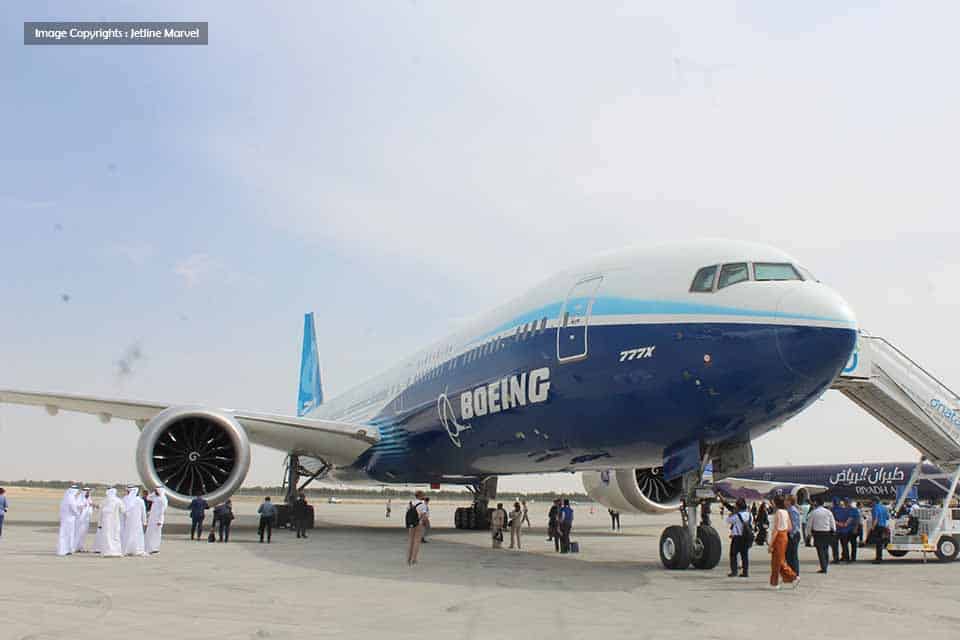Aviation
Boeing Predicts China’s Commercial Airplane Fleet to Double by 2043

Boeing’s latest forecast paints a picture of rapid growth and modernization for China’s aviation industry. According to the 2024 Commercial Market Outlook (CMO) for China, the country is set to more than double its commercial airplane fleet by 2043.
This expansion reflects the ongoing transformation of China’s aviation sector, driven by rising demand for passenger and cargo air travel.
Airbus Secures Green Light for A321XLR Mini-Suite Installations
China’s commercial fleet is projected to grow at an annual rate of 4.1%, increasing from 4,345 airplanes in 2024 to a staggering 9,740 airplanes by 2043. This growth is not only a response to increasing passenger volumes but also a reflection of the airlines’ strategic efforts to enhance connectivity by expanding networks between major hubs and smaller cities.
The CMO also anticipates that China’s annual passenger traffic growth will outpace the global average, reaching 5.9%, compared to a global rate of 4.7%. Single-aisle aircraft will dominate the market, accounting for over three-quarters of all deliveries, as air travel within China is set to become the world’s largest traffic flow.
The country will also see a significant expansion in its widebody fleet, with a demand for 1,575 new widebody airplanes, positioning China to have the world’s largest widebody fleet. Additionally, the forecast predicts that China’s freighter fleet, including both dedicated and converted models, will nearly triple by 2043, driven by the booming e-commerce sector.
Saudi Arabia Planning New Cargo Airline with Boeing, Airbus Jets
Beyond the expansion of the fleet, the report highlights the broader impact on the aviation ecosystem. Boeing estimates that Chinese carriers will require $780 billion in aviation services to support the growing fleet, encompassing digital solutions, maintenance, and modifications.
To support this fleet expansion, the industry will need to hire and train nearly 430,000 new personnel, including pilots, maintenance technicians, and cabin crew. Boeing’s relationship with China spans over five decades, with the company’s airplanes playing a critical role in the country’s civil aviation passenger and cargo transportation systems.
Boeing’s deep ties with China’s aviation manufacturing sector are also evident, as it is the largest customer of China’s aviation industry, with more than 10,000 Boeing airplanes currently flying with China-made parts. This partnership contributes over $1.5 billion annually to China’s economy through various means, including supplier contracts, joint ventures, operations, training programs, and research and development investments.

Aviation
China Eastern Receives Its Ninth C919 Aircraft, Marking a New Milestone

China Eastern Airlines (CEA) has reached a significant milestone with the delivery of its ninth COMAC C919 aircraft, continuing its lead as the launch customer for China’s domestic narrow-body airliner.
On Thursday, the airline received the latest addition to its fleet, registered as B-657T, marking another step in China’s ambitious efforts to establish itself as a key player in the global aerospace market.
Virgin Australia Launches Black Friday Sale on Flights Worldwide
This delivery is part of a major achievement for COMAC (Commercial Aircraft Corporation of China), which has now delivered a total of 10 comac c919 in 2024 alone, a remarkable increase from just three jets delivered by the end of 2023.
The C919 program represents China’s entry into the competitive market for commercial aircraft, aiming to rival the dominance of manufacturers like Airbus and Boeing in the narrow-body sector.
These 6 Airlines Are Giving You Free Wi-Fi on Your 2025 Flights
One standout feature of the c919 is its innovative in-flight technology, particularly its Wi-Fi system. Developed by the China Electronics Technology Group Corporation (CETC), this system allows passengers to connect to the “CEAIR-WIFI” wireless hotspot, providing seamless access to in-flight entertainment.
Through the website www.muflyer.com, travelers can enjoy a range of features including “Air Cinema” and “Air Games,” which enhance the flying experience.
Looking ahead, COMAC’s ambitions are not limited to narrow-body aircraft. At the 15th China International Aviation and Aerospace Exhibition in Zhuhai, c919 aircraft price made waves with the announcement of over 100 new aircraft orders.
A significant highlight was a high-profile agreement with Air China for the development of the C929, a widebody aircraft set to compete c919 vs a320 and c919 vs 737 with these models.
-

 Aviation2 months ago
Aviation2 months agoMicrosoft Flight Simulator Raises $3 Million to Bring Back the An-225 Mriya
-

 Airlines2 months ago
Airlines2 months agoQatar Citizens Can Travel to the United States Without a Visa
-

 Aviation2 months ago
Aviation2 months agoQatar Airways bans these new Electronic Devices on plane
-

 Defence2 months ago
Defence2 months agoWhich Country Has the Largest Fleet of Fighter Aircraft?
-

 Airlines1 week ago
Airlines1 week agoDAMAC Air: Dubai’s New Luxury Airline Offers Free Flights for Registration
-

 Airport2 months ago
Airport2 months agoWestern Sydney Airport Welcomes Its First Plane After 6 Years of construction
-

 Airlines6 days ago
Airlines6 days agoAir India to Launch aircraft maintenance training institute in Bengaluru
-

 Aviation2 months ago
Aviation2 months agoDid you know ? Once Boeing 747 carried 1088 passenger in 1991








